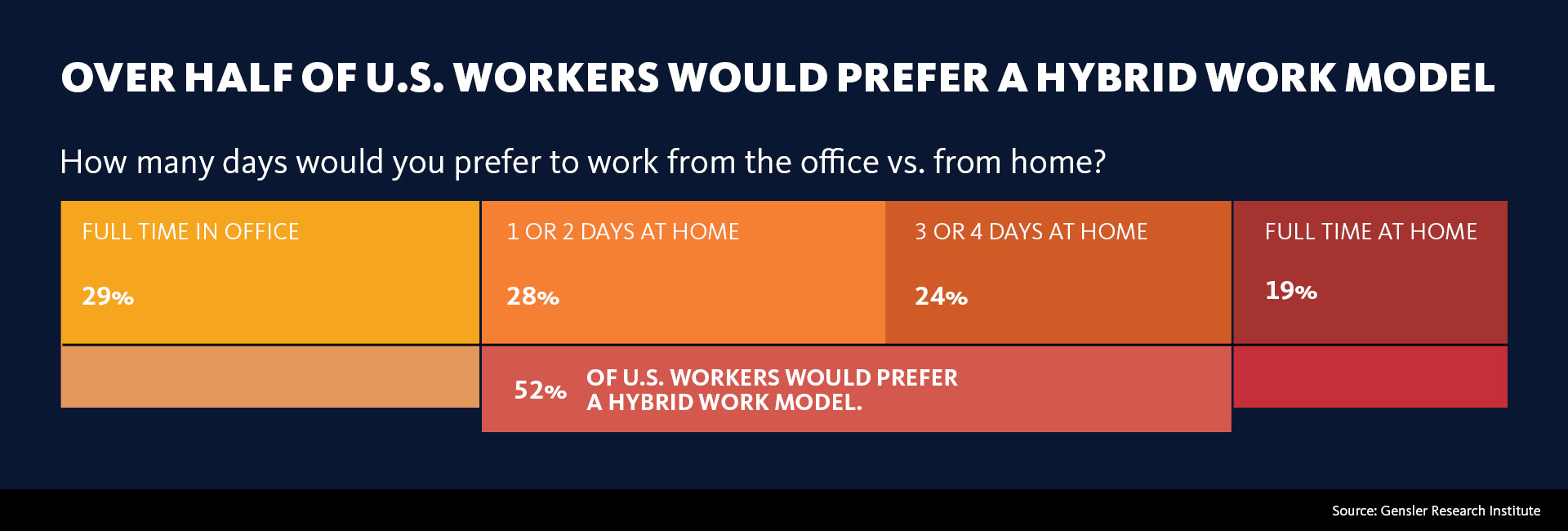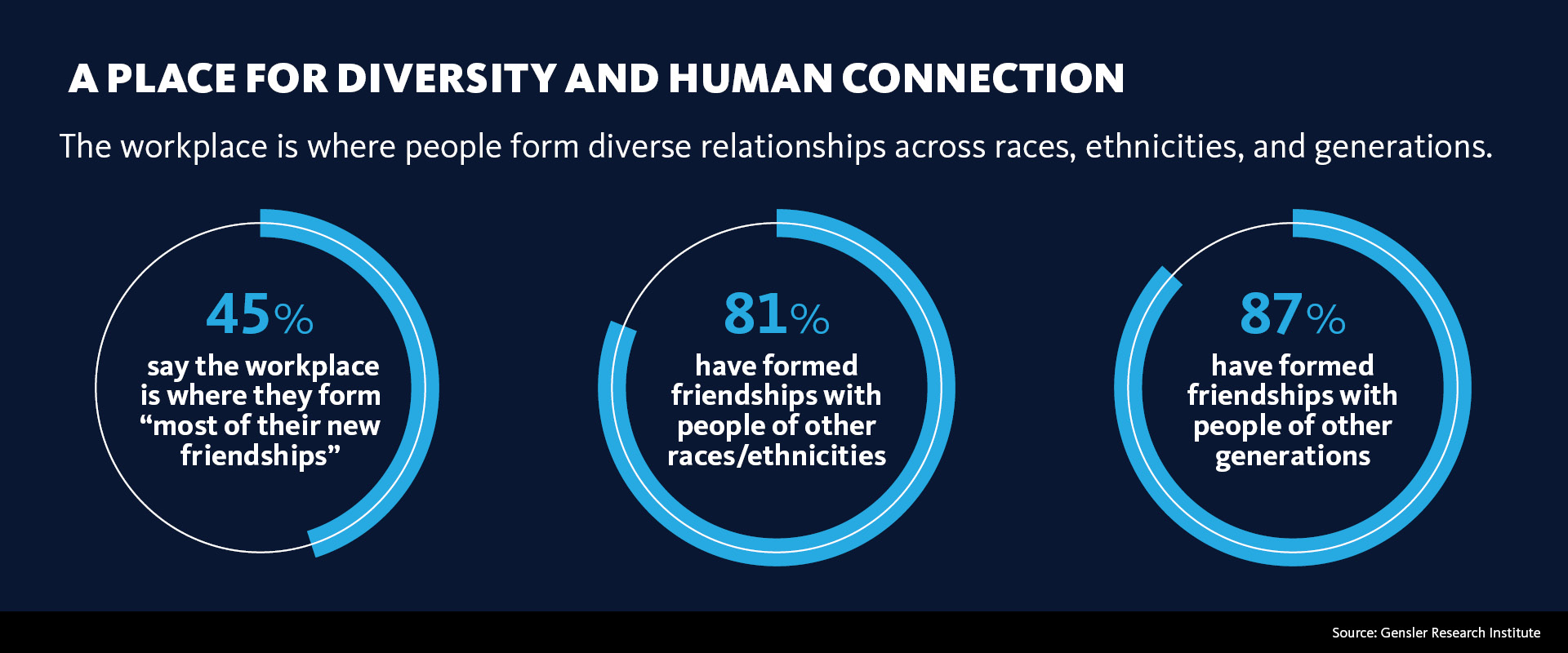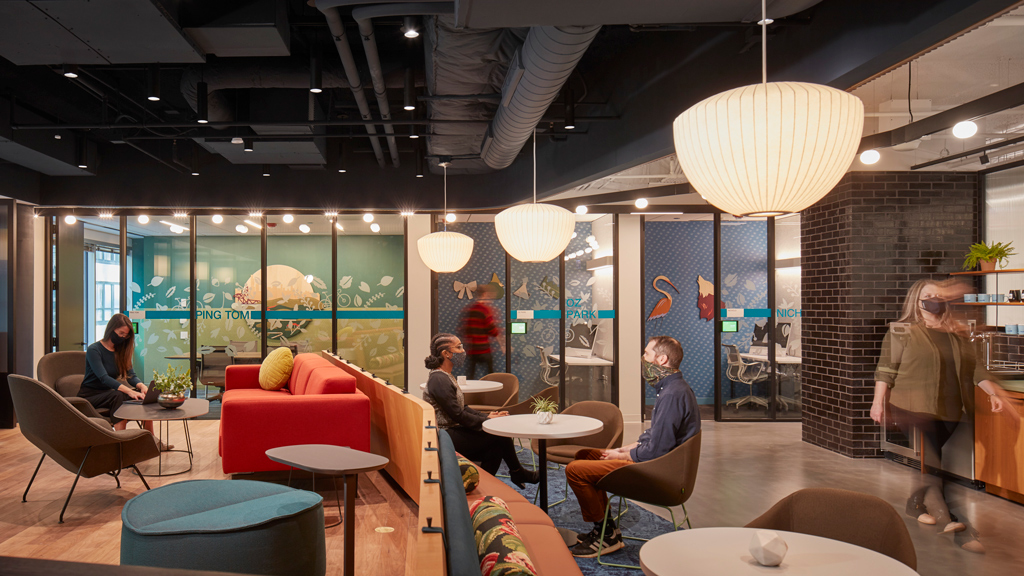How FOMO Is Driving People Back to the Office
April 02, 2021 | By Andy Cohen
As vaccines continue to roll out, companies across the globe are taking a hard look at how to safely bring their people back together. Enthusiasm for a return to the office is growing among workers who have spent the last year in relative isolation. And with many colleagues getting back into the workplace, remote employees are experiencing a new kind of FOMO—the fear of missing out on useful updates, critical intel, and key connections. Information shared in person contains rich layers of nuance and context that simply cannot be conveyed through a computer screen. People want and need face-to-face interaction to excel at their jobs.
While a robust body of research (from Deloitte, Stanford, and many others) documents how in-person collaboration accelerates creativity, supports innovation, and boosts productivity, those aren’t the only benefits that emerge when workers come together. Here at Gensler, we are hearing from clients and colleagues alike about the unexpected, intangible advantages of working in the same space—advantages that pay dividends for both business and morale.
The shift to a largely remote model of work during the peak of the pandemic was a crucial step in preserving public health and safety. But as many can attest, working from home came with its fair share of challenges. People with school-aged children found themselves pulling double-duty as both parent and teacher. Individuals with shared or small residences were forced to repurpose living rooms, dining areas, and kitchen tables for work. And everyone spent more time than ever in front of a screen, with coworkers and loved ones relegated to the now-ubiquitous grid of a video call.

Findings from Gensler’s 2020 Workplace Survey confirm the anecdotal evidence. Just 19 percent of the U.S. workers surveyed want to work from home full time, while over half prefer a hybrid model and nearly a third want a total return to the office. With more than a year of pandemic-induced remote work behind many of us, the purpose and value of the workplace has never been more clear—and its design has never been more important. Optimized for collaboration, connection, and visceral human experience, the well-designed office also promotes authenticity, fosters camaraderie, and prepares the next generation of leaders for success.
While technology has been an important tool for staying connected with colleagues during this global health crisis, it’s not a foolproof replacement for in-person engagement. Casual conversation with coworkers has been a casualty of remote work. Typing a message in a chat box is no replacement for sharing a quick thought with someone across the table. A virtual waiting room doesn’t afford the opportunity to trade off-the-cuff ideas before a meeting. These unscripted, unfiltered exchanges take place constantly in the office, from the break room to the board room. Indeed, some 74 percent of those who participated in Gensler’s 2020 Work from Home Survey reported that people are what they miss most about the office. By returning to the workplace, we are reclaiming these moments of authentic connection that open the door to new ways of thinking, spark surprising solutions, and deepen our professional ties.

There is no digital substitute for the camaraderie and friendships that are solidified at work. According to Gensler’s U.S. Workplace Survey, the office is crucial to establishing lasting relationships with people of different cultural backgrounds and life stages. More than 80 percent of those surveyed have formed friendships with individuals of other races and ethnicities, and nearly 90 percent with people of different generations. The benefits of these connections aren’t just personal; those who work at a diverse company report feeling more empowered, more satisfied, and more positively about their employer. At a time when much of the world is so polarized, the importance of forging these sorts of genuine connections cannot be overstated—and the office is where that happens.
In tandem with personal growth, professional development thrives in the workplace. But during the pandemic, less than half of all workers — just 43 percent — have participated in mentorship and coaching. Today’s junior staff members are tomorrow’s leaders, but this group is particularly affected by the decrease in engagement with more senior colleagues. Younger generations also feel less productive at home, less connected, and less satisfied with the work-from home experience.
The next generation of the workplace will look and function differently than before, but the core focus on human experience remains a constant. By providing the surroundings that all staff members need to thrive, leaders can ensure the enduring health of their company while demonstrating good stewardship of their most important asset: their people.
For media inquiries, email .

